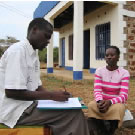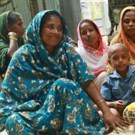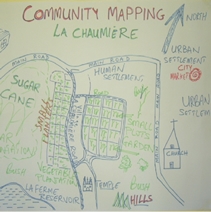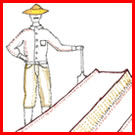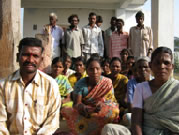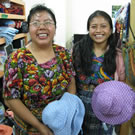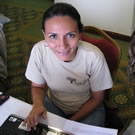| Women participating in a workshop on developing a Village Agricultural Committee | |
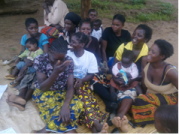 |
Martin is an Agricultural Specialist in Land Husbandry; right now he’s working on a Zambian government climate change project as the Head of the Resilient Agriculture Platform and Participatory Adaptation Advisor. Ursula, works for the GIZ as a Program Advisor for the GIZ Environment and Rural Development Program in the Philippines.
|
Even though they are many thousands of miles apart their course partnership is a strong one. Interestingly, they were able to meet in December in Durban, South Africa at COP 17. So, unlike many of our course partners who never get a chance to meet each other—they did!
Their project is an interesting one and has been in design and development for six months now. With Martin’s recent grant award they will be able to launch the first phase of the project. The project has four agricultural components:
- An Agricultural Income Generation Program
- An Animal Husbandry Program
- A Land-Use Management Plan
- A Climate Smart Agricultural Practices Program
| Men in the Village Agricultural Committee workshop | |
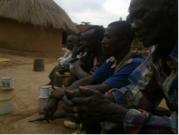 |
Follow this link to see the results of a participatory capacity and vulnerability assessment which Martin did with his community in February and see an outline of the project which they have developed in 341, 342, and 343.
|
As their last assignment for course 343—which they just completed—they facilitated the development of a village agricultural committee to co-manage the four project components. Over the next few months, the committee will be working on structuring the committee, goal setting, and identifying training needs. Their first output will be to prioritize a list of income generation activities for the Agricultural Income Generation project component that just received the funding.
Martin begin engaging with this community starting in Assignment 1 of OL 341. This consistent engagement during project design and development creates community ownership of the project. During project implementation, members of the Village Agricultural Committee will learn how to manage and maintain the different project components. When Martin’s project commitment comes to an end, the community will not only have a sense of project ownership, they will know how to run the project long into the future.
Would you like to learn how to develop Community Based Adaptation Projects?
Please write us with your stories, thoughts and comments through Online.Learning@csd-i.org








